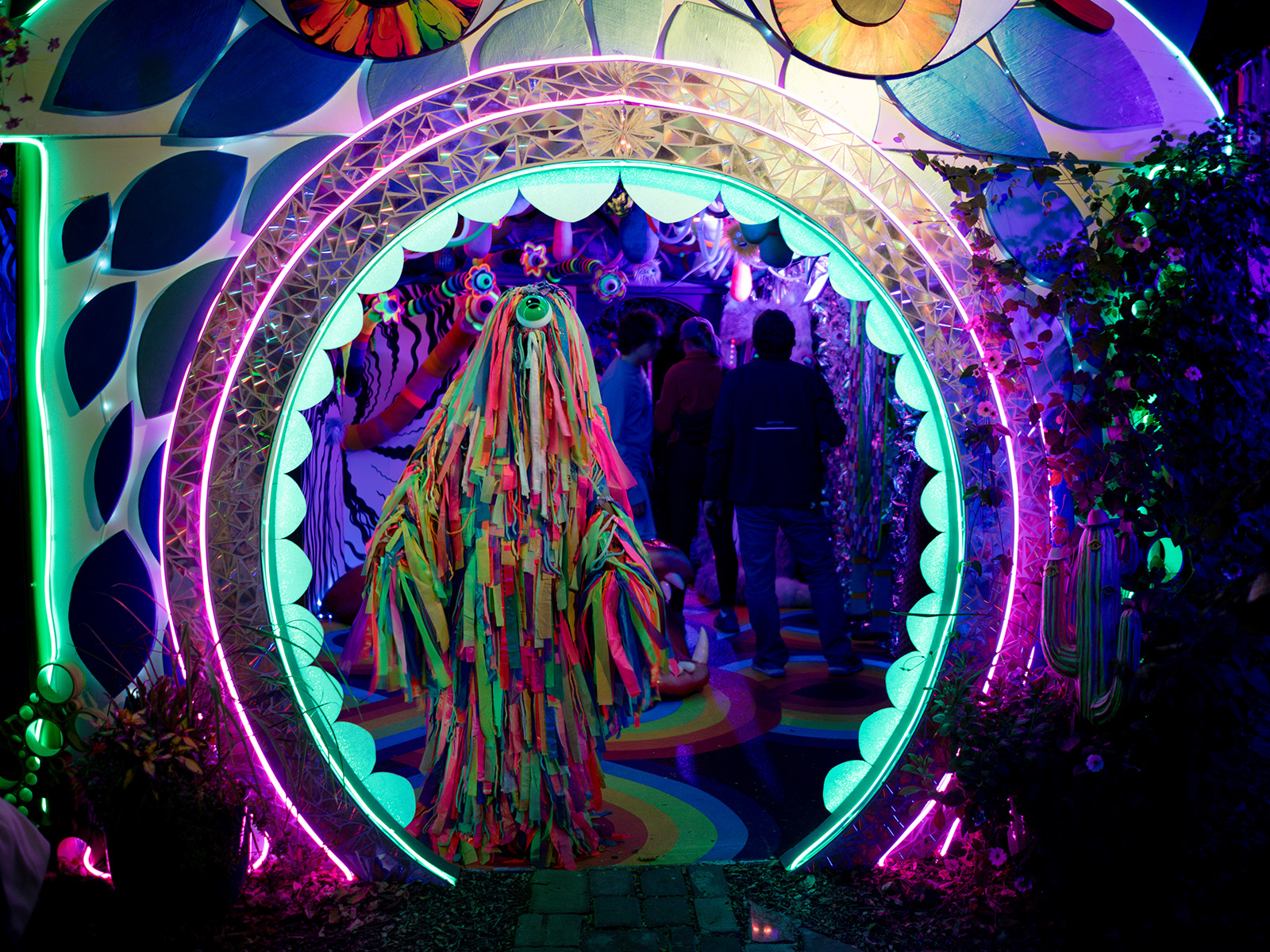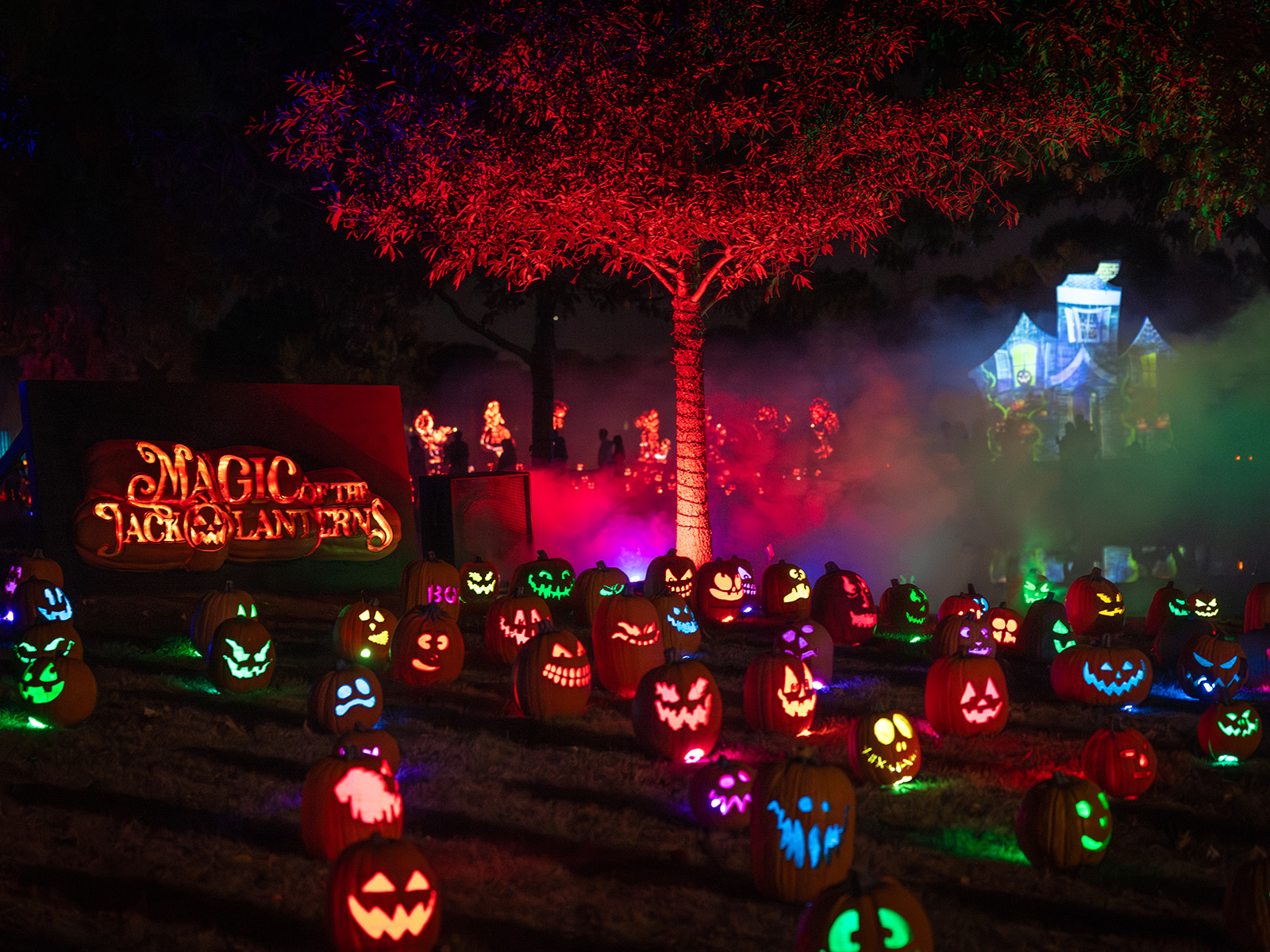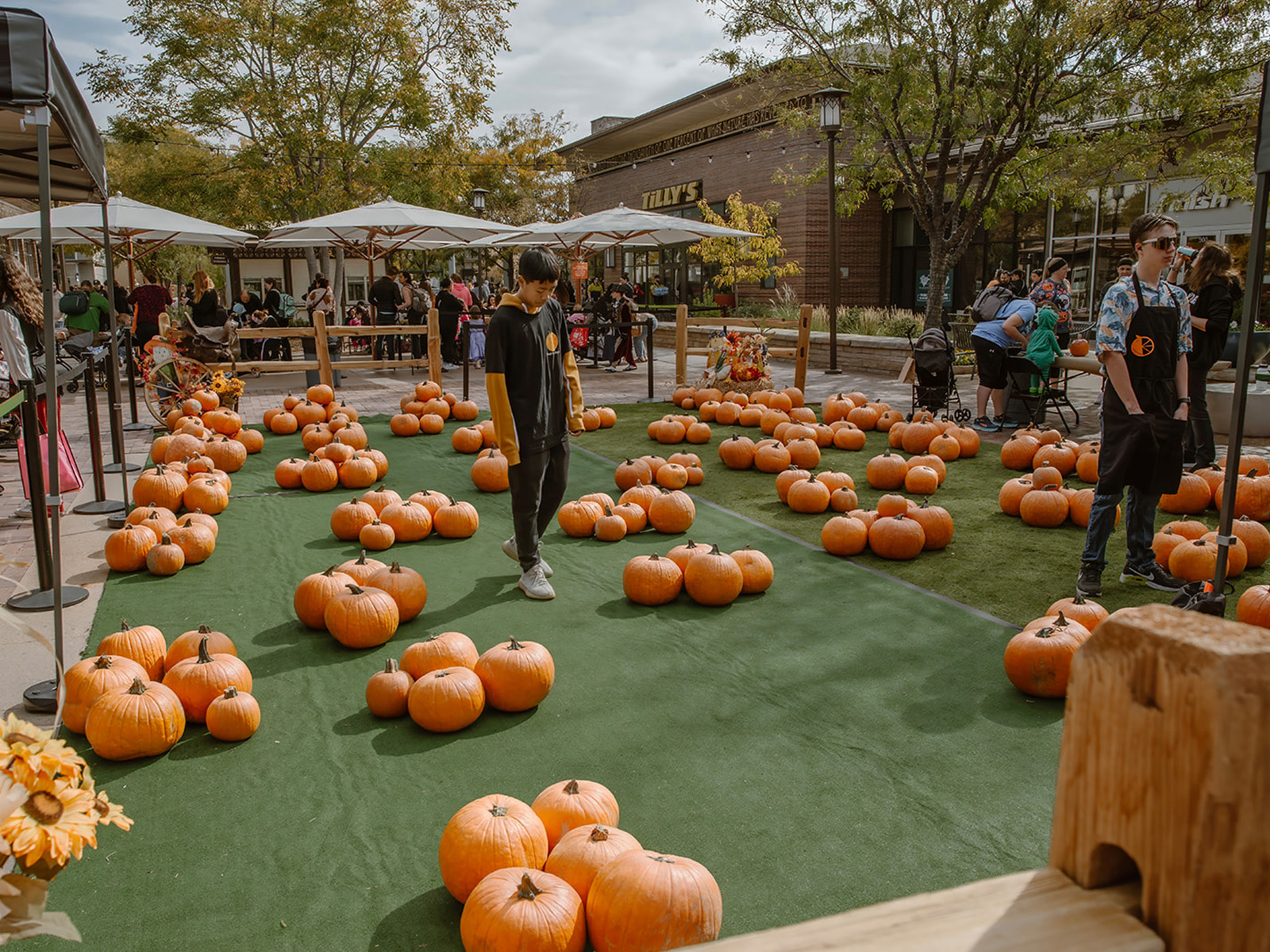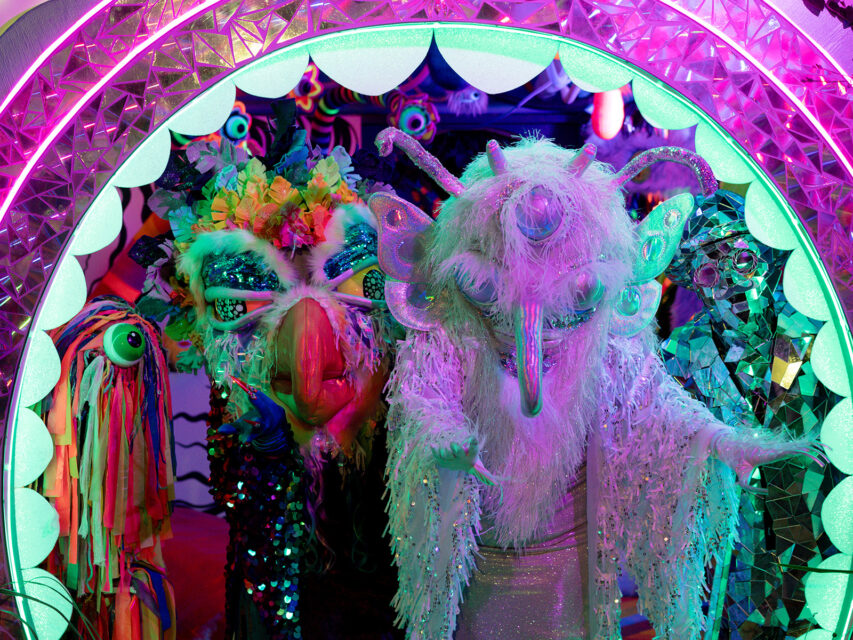The Local newsletter is your free, daily guide to life in Colorado. For locals, by locals.
Everyone has their favorite holiday—Christmas lovers who keep their tree up year-round; Fourth of July fanatics who amass an artillery of fireworks; and Thanksgiving diehards who just want to eat turkey and watch football in peace. Halloween, though, might have the most rabid fanbase of all.
Lucky for that last camp, there are plenty of ways to celebrate the spookiest season all month long—from hair-raising haunted houses to decidedly more relaxed rendezvous. Pick what level of fright you’re in the mood for—we’ve ranked events on a scale of one to three—and get to celebrating.

Casa Boonita
- Date: Now–November 2
- Time: Varies
- Cost: Starting at $30 for lunch and $40 for dinner and weekends
- Address: 6715 W Colfax Ave., Lakewood
- Fright factor: 😮
If you thought Casa Bonita couldn’t get more over-the-top, think again. This month, the Front Range institution is leaning into the season with large-scale installations inspired by Día de Los Muertos, a limited-time apple cinnamon margarita, and trick-or-treating throughout the pink palace. Costumes are encouraged, so you may see more than one gorilla roaming the restaurant.
Spiders Around the World
- Date: Now–October 31
- Time: Daily 9 a.m.–5 p.m.
- Cost: $13–$17
- Address: 6252 W. 104th Ave., Westminster
- Fright factor: 😮 😮
Depending on your tolerance for insects, this installation will either be scarier than The Exorcist or your dream day out. This month, the Butterfly Pavilion will be teeming with spiders from around the world, including exotic species like the Colombian pumpkin patch tarantula and skeleton leg tarantula. Truly fearless arachnophiles will want to step inside the Spider Zone, where hundreds of free-roaming orb weavers will spin their webs with no barriers or glass to block your view. Select dates will also include “Bug-A-Boo” trick-or-treating for families.
Spookadelia: Unspoken Immersive Art Experience

- Date: Now–November 15
- Time: Varies
- Cost: $15–$34
- Address: 1836 S. Broadway, Denver
- Fright factor: 😮
If your ideal haunted house includes zero zombies popping out from the shadows, no chainsaw-wielding clowns, and a lot of funky decor, purchase tickets to this installation stat. The vibrant all-ages experience invites visitors to explore the space, which is decked out with whimsical creatures created by Sadie Young, interactive elements by Ryterski Wonders, and more. Visit on Fridays, Saturdays, and Sundays to interact with live characters.
Magic of the Jack-O’-Lanterns

- Date: Now–November 2
- Time: Varies
- Cost: Starting at $10
- Address: 6115 S. Santa Fe Drive, Littleton
- Fright factor: 😮
This All Hallows Eve–themed experience is held at dark—but you still might want to pack your sunglasses. That’s because the main attractions are more than 70 glowing displays made up of gourds. Meander through Hudson Gardens to peep the illuminated installations, snap pictures of the 7,000 hand-carved pumpkins, watch a synchronized light show, and take a stroll on the enchanted forest-themed trail—just watch out for the witches.
Spirits of the Brown Palace Haunted History Tour
- Date: Now–November 2
- Time: 5–7 p.m.
- Cost: Starting at $41
- Address: 321 17th St., Denver
- Fright factor: 😮 😮 😮
After being open for more than a century, the Brown Palace has its fair share of ghosts lurking in the halls. Grab a stiff drink from the bar and then embark on a tour of the hotel, during which you’ll learn about the spirits and legends of the historic haunt. Come back on Halloween night for a 21+ gilded masquerade ball.
Cult of Cthulhu
- Date: October 10–11, 17–18, 19, 24–25, October 31–November 1
- Time: Varies
- Cost: $28–$39
- Address: Locations vary
- Fright factor: 😮 😮
For the uninitiated, Cthulhu is an invention of horror by author H.P. Lovecraft (picture a cross between a green octopus, dragon, and human—with wings). This interactive touring parody play brings levity to the Lovecraftian tale, with an infusion of ’80s camp, audience participation (expect some slightly creepy chanting), and lots of spine-raising thrills. Expect loud noises, murderous cats, and a storyline suited for ages 12 and up.
Downtown Longmont Dia De Los Muertos
- Date: October 11
- Time: 11 a.m.–3 p.m.
- Cost: Free attendance
- Address: Downtown Longmont at 4th Avenue and Kimbark Street
- Fright factor: 😮
Longmont’s Día de los Muertos celebration is the longest-standing of its kind in Colorado—and there’s a reason it draws thousands of people each year. The centerpiece fiesta includes live music and dance performances; street food; and arts-and-craft stations. Make sure to stick around for Firehouse Art Center’s Gigantes Procession at 2 p.m. to see a parade of massive papier-mâché puppets cruise through downtown.
Spooky Sweets Stroll

- Date: October 12
- Time: 11 a.m.–2 p.m.
- Cost: Free attendance, some events ticketed
- Address: 14697 Delaware St., Westminster
- Fright factor: 😮
Your kids certainly won’t say no to an opportunity to sneak in some extra trick-or-treating. A few weeks before Halloween, tykes can test drive their costumes around the 50-plus businesses in the Orchard Town Center who will be passing out candy. Families can also select a pumpkin to decorate on-site, do the Monster Mash on the dance floor, and stroll through the “Macabre Market,” stocked with the wares of local artisans.
Science Lounge: Dead Man’s Party
- Date: October 16
- Time: 7 p.m.
- Cost: $35
- Address: 2001 Colorado Blvd., Denver
- Fright factor: 😮 😮
Anyone who’s seen Rocky Horror Picture Show or read the Strange Case of Dr. Jekyll and Mr. Hyde knows that science and horror can go hand-in-hand. At this over-21 soiree, attend a mini-lecture (The Good, The Bad, and the Anatomically Incorrect: Science Fiction vs. Science Fact), watch a zoology preparator process a specimen in real time, and peruse some rarely-seen wet collections (animals preserved in an alcohol mixture) from the zoology department. The squeamish might want to stick to the dance floor, where there will be plenty of beats and booze flowing.
Pumpkin Harvest Festival
- Date: October 18–19
- Time: 9 a.m.–4 p.m.
- Cost: $15–$45
- Address: 715 S. Forest St., Denver
- Fright factor: 😮
Between the apple cider churros, prairie games, and build-your-own scarecrow station, this experience at Four Mile Historic Park is extremely wholesome—meaning we promise no scary zombies are lying in wait. Families can pick out pumpkins, participate in autumnal arts and crafts (think: cornhusk dolls), watch domestic arts and blacksmithing demonstrations, and try to complete a Western-themed scavenger hunt.
Harvest Haunt
- Date: October 18–19
- Time: Grounds are open 9 a.m.–5 p.m., activities 10 a.m.–3 p.m.
- Cost: $7–$14
- Address: 17155 W. 44th Ave., Golden
- Fright factor: 😮
Let’s hope you can get out of this annual event at the Colorado Railroad Museum without a Murder on the Orient Express–style mystery on your hands. Come in costume and ride the authentic coal-burning steam locomotive, traipse through a mock graveyard, and try to find your way out of a hay-bale maze. If the graveyard gave you the heebie-jeebies, soothe your nerves with Spike the Railroad Dog, the museum’s mascot.
Harvest Hoot
- Date: October 24–26
- Time: 9 a.m.
- Cost: $17–$19
- Address: 2121 Children’s Museum Drive, Denver
- Fright factor: 😮
Parents won’t have to worry about protecting little ones’ eyes from gore and ghastly ghosts at this kid-focused celebration. Instead, the age-appropriate festivities include carnival games, meet-and-greet sessions with live animals, cooking up treats in the Learning Kitchen, and arts and crafts.
Trick or Treating in the Multiverse
- Date: October 26
- Time: Noon–6 p.m.
- Cost: Free admission
- Address: 1338 First St., Denver
- Fright factor: 😮
Trick-or-treating in your neighborhood isn’t going to cut it this year—instead, try taking your little ghouls to the multiverse at Meow Wolf. Convergence Station is transforming into an all-ages outer space extravaganza, where costumed earthlings can interact with wandering (friendly) aliens, post up at creation stations, and collect candy at scattered installations.
Ghostlight
- Date: October 29
- Time: 7:30 p.m.
- Cost: $29–$34
- Address: 9995 E. Colfax Ave., Aurora
- Fright factor: 😮 😮 😮
If you were formerly a kid who stayed up late reading Scary Stories to Tell in the Dark, might we suggest this grown-up version? Everyman Theatre Co. will present six eerie tales—all revolving around the theatre. Expect stories of creepy antique dolls, a mysterious baby’s cry, and a seance that summons a stubborn spirit.
Halloween Potluck Party
- Date: October 31
- Time: 6 p.m.
- Cost: Free attendance
- Address: 1495 York St., Denver
- Fright factor: 😮
Those of us who prefer savory to sweet are mostly out of luck where trick-or-treating is concerned—but this potluck might be the remedy. Bring your world-famous (or store-bought) shareable dish to Bruz Off Fax, where revelers will grub, imbibe, and boogie down to beats from DJ Blake Britton.
Nocturne’s Halloween Spooktacular
- Date: October 31
- Time: 6:30–7:45 p.m. and 9–10:30 p.m.
- Cost: Starting at $38 per person
- Address: 1330 27th Street, Denver
- Fright factor: 😮
It’s funny how scary music sticks in our psyche—look to the Halloween theme or the Jaws soundtrack for proof. Pianist and bandleader Adam Bodine will take guests through a repertoire of seasonal music, from the haunting to the humorous to the psychedelic. For extra sonic scares, check out the Colorado Symphony’s Halloween programming, including a musical presentation of Tim Burton’s The Nightmare Before Christmas.
Coloween
- Date: October 31
- Time: 9p.m.–3 a.m.
- Cost: Starting at $107
- Address: Bounce Empire 1380 S. Public Rd., Lafayette
- Fright factor: 😮 😮
Corn mazes and haunted fields aren’t difficult to find this time of year. A haunted bouncy house, though? That’s a new one. This 16-year-old Halloween bash is being held at Lafayette’s Bounce Empire this year—so between drinks from the open bar and turns on the dance floor, you can bounce with all the other clowns, mummies, and Taylor Swifts in attendance.








